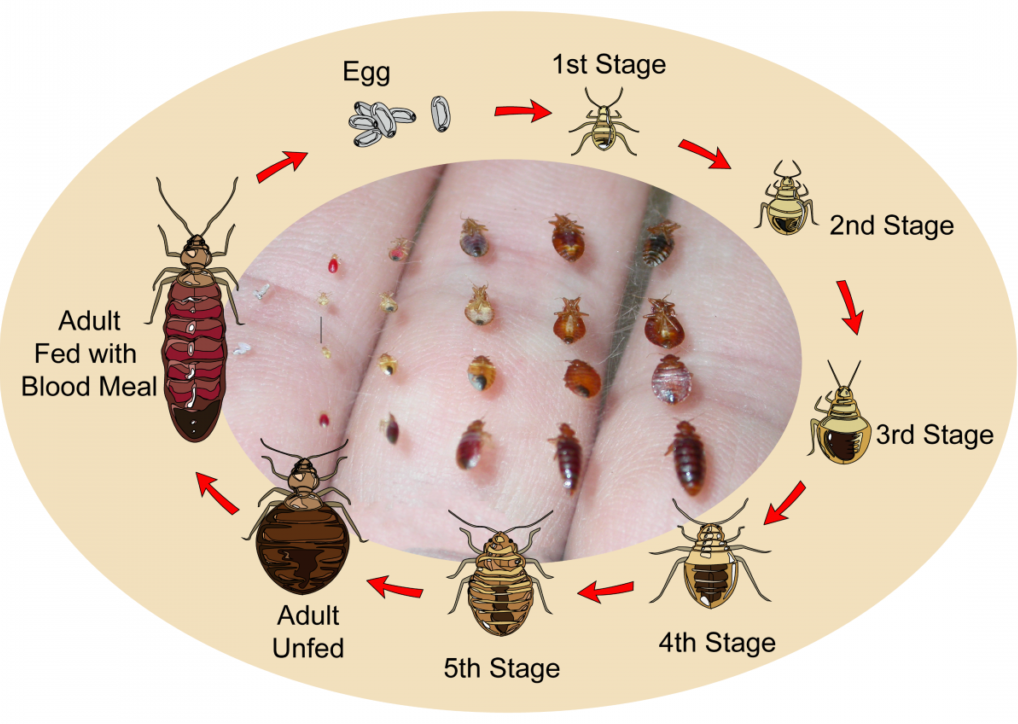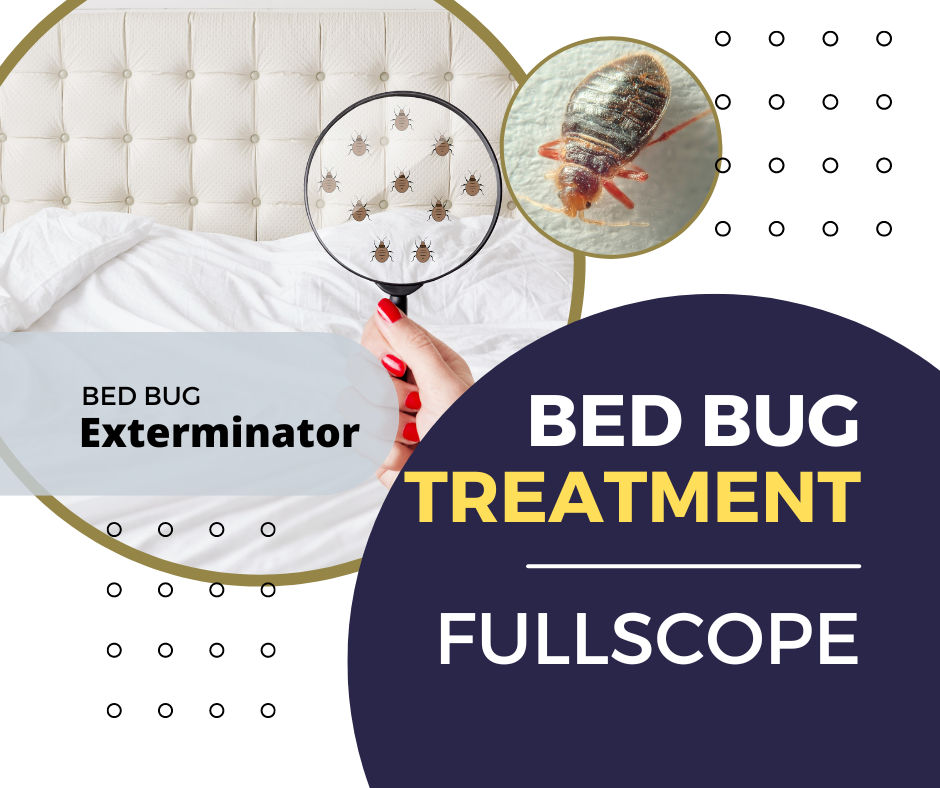How to Recognize Bed Bug Bites and Treat Them Quickly
How to Recognize Bed Bug Bites and Treat Them Quickly
Blog Article
Obtain Informed Regarding the Kinds Of Insect Control Approaches and Their Benefits for Homeowners
Recognizing the numerous parasite control approaches readily available to home owners is crucial for reliable pest monitoring. Property owners who are well-informed can make critical selections that not only address bug problems but also enhance the general top quality of their living setting.
Chemical Bug Control Techniques
Chemical insect control techniques are a crucial component of incorporated parasite administration techniques for homeowners looking for efficient services to pest problems. These techniques include the application of chemical substances designed to get rid of or deter parasites that endanger personal home, health, and convenience. Typical chemicals utilized include pesticides, herbicides, rodenticides, and fungicides, each tailored to target details insects.
The key benefit of chemical insect control is its quick efficiency; several formulas offer prompt results, decreasing pest populaces substantially quickly. Furthermore, developments in chemical formulations have brought about products that are extra environmentally pleasant and have reduced toxicity levels for non-target microorganisms when used correctly.

Organic Bug Control Methods
Natural parasite control approaches have gained prestige as house owners seek safer and extra lasting options to traditional chemical approaches. Organic insect control techniques make use of all-natural predators, bloodsuckers, or microorganisms to handle pest populaces efficiently. This method is not just ecologically pleasant however also decreases the danger of damage to non-target varieties, including useful bugs and wild animals.
One of one of the most typical organic control techniques entails introducing all-natural predators into the setting. For instance, ladybugs can be made use of to manage aphid populaces, while nematodes target soil-dwelling bugs like grubs. In addition, parasitoids-- organisms that reside on or within a host-- can be used to control certain insect varieties by laying eggs inside them, inevitably resulting in their death.
An additional method is the usage of biopesticides, which are stemmed from natural materials such as minerals, plants, or microorganisms (bed bug exterminator). These products can successfully target parasites while posing very little danger to human beings and pets. Overall, biological bug control strategies provide homeowners with an effective ways of parasite management that aligns with environmental concepts, promoting a healthier living setting while lowering reliance on artificial chemicals
Mechanical Insect Control Approaches
Mechanical insect control methods encompass a range of approaches that literally avoid or get rid of bugs without making use of chemicals. These methods are specifically beneficial for home owners looking for environmentally pleasant alternatives while making sure the safety and security of their home.
One common method is the use bug control of barriers, such as nets, catches, and screens, which stop bugs from going into homes or particular areas. Mounting home window displays can properly maintain pests out, while using physical barriers around yards can prevent larger pests like bunnies or deer. In addition, mechanical traps developed for rats can capture and get rid of these insects without the demand bedbug for harmful compounds.
Another efficient approach includes the usage of vacuums and brooms to get rid of bugs straight from surfaces. Routine cleaning and maintenance can significantly minimize bug populaces by eliminating food resources and hiding areas. Utilizing devices like ultrasonic bug repellents can hinder different pests through sound waves that are unpleasant to them yet inaudible to people.
Social Parasite Control Practices
Cultural bug control methods concentrate on changing the atmosphere and management techniques to produce conditions that are much less helpful to pest infestations. These techniques are essential in preserving a well balanced ecosystem and lowering the reliance on chemical treatments. By changing agricultural practices, house owners can Get More Info effectively deter parasites while promoting plant health.
One typical method includes plant turning, which interferes with the life cycles of insects by transforming the kinds of plants expanded in a certain location (bed bug exterminator). This not just minimizes pest populaces yet additionally enhances dirt health. Additionally, intercropping-- planting varied plants in distance-- can puzzle parasites and lower their capability to locate their recommended host plants
Water administration is one more vital element of cultural techniques. Correct watering techniques can prevent standing water, which works as a breeding place for mosquitoes and various other insects. Moreover, maintaining cleanliness in and around the home, such as regularly getting rid of particles and food waste, can substantially decrease insect attraction.
Incorporating these cultural methods into a thorough bug management approach enables homeowners to develop an atmosphere that normally discourages pests, thereby improving the effectiveness of various other control methods while advertising sustainable gardening and landscape design.

Integrated Bug Management Approaches
Integrated Pest Administration (IPM) stands for a holistic method that integrates numerous approaches to successfully handle parasite populaces while minimizing environmental impact. This approach incorporates organic, social, physical, and chemical methods to attain lasting pest control. By assessing pest populations and their natural enemies, IPM emphasizes monitoring and determining insects before executing control measures.
One of the core concepts of IPM is using thresholds, which establish the level of pest activity that warrants intervention. This ensures that therapies are applied only when necessary, lowering the reliance on chemical pesticides. Organic control methods, such as introducing natural killers or bloodsuckers, operate in combination with cultural practices like crop turning and environment control to disrupt pest life cycles.
Additionally, IPM motivates using least-toxic chemical options when treatment is needed, prioritizing items that present marginal threat to non-target organisms and the setting. For homeowners, adopting IPM approaches not only enhances the efficacy of pest monitoring however likewise promotes a healthier living environment, cultivating biodiversity and reducing chemical exposure. Eventually, IPM equips homeowners to make educated decisions that stabilize insect control with ecological obligation.
Conclusion
In conclusion, understanding the various pest control methods empowers property owners to make informed decisions regarding pest management. Each approach-- chemical, organic, mechanical, social, and incorporated insect administration-- provides distinct benefits that provide to various requirements and preferences.
Understanding the various pest control approaches readily available to home owners is necessary for efficient bug management.Chemical pest control approaches are a critical part of incorporated insect management approaches for house owners seeking effective remedies to pest invasions. In general, organic bug control methods provide home owners with an effective means of parasite administration that aligns with eco-friendly principles, advertising a healthier living setting while minimizing reliance on artificial chemicals.
Cultural parasite control methods concentrate on customizing the environment and management techniques to produce problems that are less conducive to pest invasions.In final thought, comprehending the numerous insect control techniques empowers house owners to make enlightened decisions regarding pest management.
Report this page